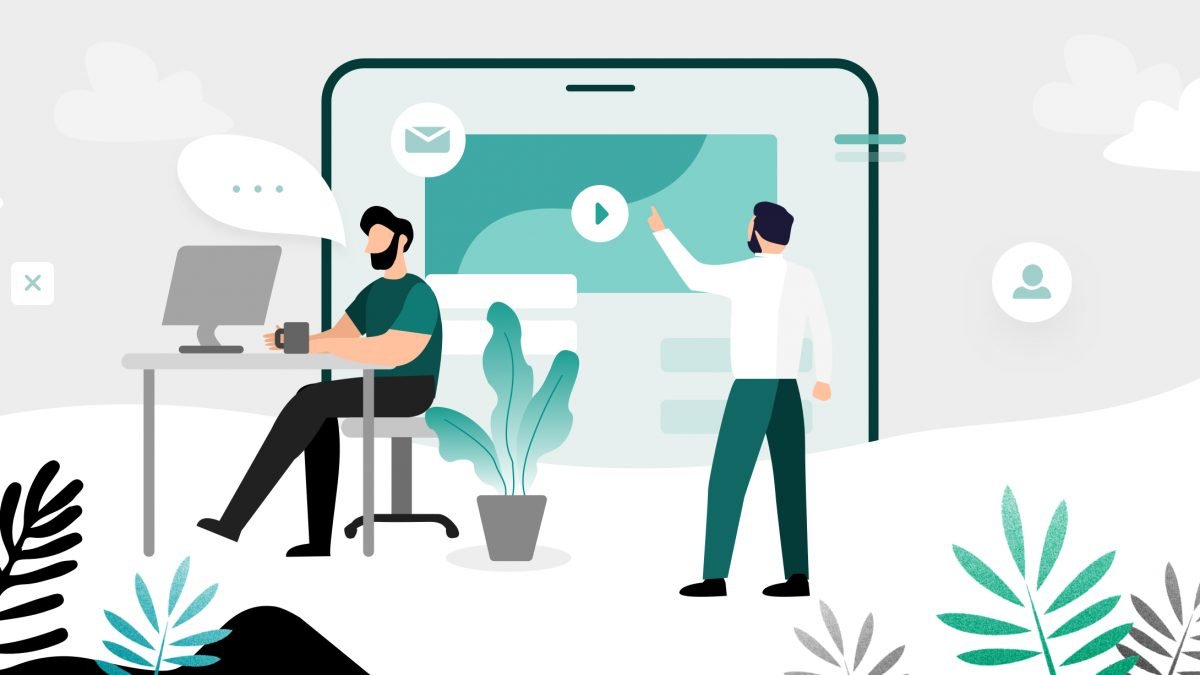Before a product is launched to market (and even after that) there’s several things that happen behind the scenes. During each phase of product development, the team will be working on different aspects of the product until it’s finally ready to be launched. However, you need to remember that the software development process is never truly over. After the launch there should still be ongoing testing, adjusting and improving. With that in mind, here’s the 5 basic stages of digital product development:
1. Concept Phase
The very first phase of product development begins with a new business idea. Whether that means a new functionality or an entirely new product – it all starts as a concept. An idea can come up based on some user feedback, market research, personal experiences etc. There’s no clear rule as to how you can come up with a business venture. During this phase, it’s all in your hands. When something pops into your head you need to do the initial research and assessment to see whether it has any potential and can be further investigated.
2. Research Phase
Once you have come up with an idea and decided that it’s worth pursuing, you will move on to the next phase of product development. This is ideally the time when you will contact a software development agency and start working with their team. The research phase is extremely important, because the insights gathered here will impact the end product, your marketing strategy and business strategy.
During this phase you need to collect information about the market and the industry as a whole, your customer segment, their habits, pains and goals, the growth potential of the market, your competitors, your business environment and anything else that can impact your business. Many business owners disregard this stage and find it unnecessary. However, it’s the research that can really tip the success scale in your favor. It’s worth to spend extra time researching the market, because it will save you time and money later on.
Subscribe for exclusive access
Prototyping & Validating The Product
During the research phase you can also create a prototype of your product and validate your concept before you move on to the next phase of product development. After you’ve gathered the data about the market and the users, you can create a simple prototype (it doesn’t even have to be digital, you can make it out of paper). Then go out and ask a few people who are your potential users to take a look at it and give you feedback. It will provide you with great insights that will be extremely useful during the next phase.
3. Development Phase
After you’ve gathered all the necessary data, you and your software development team can move on to the next phase of product development: design and coding. This is one of the longest stages of the entire process, and there’s often some testing involved here as well. First, there’s UX design, which includes designing wireframes and functionalities. Then, there’s UI design which focuses on visual identification, branding and other visual elements. Next, there’s the actual development which, depending on your project, can take quite some time to complete. If you’re looking to learn more about those processes read our articles about UX & UI design as well as the software development process.
4. Testing Phase
After your product is designed and developed, it’s not go-time yet. If you want to maximize your chances of success you need to test it first. If you work with a software development agency they will guide you through this complex process. It’s important to choose the right testing methods and to carefully analyze the results. Based on that you will be able to make all the necessary improvements and ensure your launch will go smoothly.
5. Launch
Last but not least, the launch. If you’re looking to launch onto multiple platform, make sure it’s all planned properly. This way, your product will go live everywhere at the same time. What’s also important is the marketing strategy you have for your launch. And lastly, it’s not all over after the launch. It’s actually just begun. You need to constantly gather feedback and measure your product’s performance. It’s nice to provide in-product tools for users to express their opinions so that you will have a constant flow of information.
If you’re looking for a team to help you through each phase of product development – contact us and let’s get your project started!
